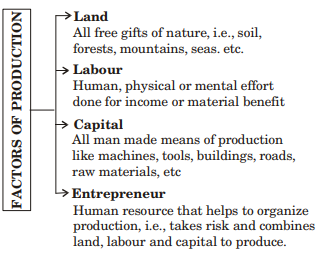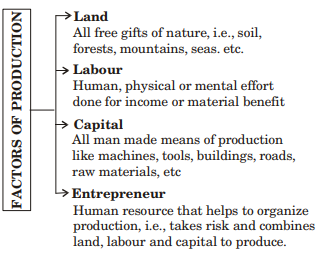Economics miscellaneous
- A demand curve, which is parallel to the horizontal axis, showing quantity, has the price elasticity equal to
-
View Hint View Answer Discuss in Forum
Price elasticity of demand measures consumer response to price changes. If consumers are relatively sensitive to price changes, demand is elastic; if they are relatively unresponsive to price changes, demand is inelastic. Perfectly inelastic demand is graphed as a line parallel to the vertical axis; perfectly elastic demand is shown by a line above and parallel to the horizontal axis. When the demand for a commodity is perfectly elastic, the quantity of demand keeps changing with the price. So the coefficient of price elasticity of demand is infinity.
Correct Option: D
Price elasticity of demand measures consumer response to price changes. If consumers are relatively sensitive to price changes, demand is elastic; if they are relatively unresponsive to price changes, demand is inelastic. Perfectly inelastic demand is graphed as a line parallel to the vertical axis; perfectly elastic demand is shown by a line above and parallel to the horizontal axis. When the demand for a commodity is perfectly elastic, the quantity of demand keeps changing with the price. So the coefficient of price elasticity of demand is infinity.
- Perfectly inelastic demand is equal to :
-
View Hint View Answer Discuss in Forum
Price Elasticity of Demand is a measure of the relationship between a change in the quantity demanded of a particular good and a change in its price. It measures the responsiveness of demand to changes in price for a particular good. If the price elasticity of demand is equal to 0, demand is perfectly inelastic (i.e., demand does not change when price changes).
Correct Option: C
Price Elasticity of Demand is a measure of the relationship between a change in the quantity demanded of a particular good and a change in its price. It measures the responsiveness of demand to changes in price for a particular good. If the price elasticity of demand is equal to 0, demand is perfectly inelastic (i.e., demand does not change when price changes).
- Which law states that with constant taste and preferences, the proportion of income spend on food stuff diminishes as income increases?
-
View Hint View Answer Discuss in Forum
According to Engel's Law, as disposable income of a consumer increases, the percentage of income spent for food decreases if all other factors remain constant. This happens even when the actual expenditure on food rises. The income elasticity of demand of food is less than 1. A lower Engel coefficient indicates a higher standard of living.
Correct Option: D
According to Engel's Law, as disposable income of a consumer increases, the percentage of income spent for food decreases if all other factors remain constant. This happens even when the actual expenditure on food rises. The income elasticity of demand of food is less than 1. A lower Engel coefficient indicates a higher standard of living.
- A demand curve will not shift:
-
View Hint View Answer Discuss in Forum
In economics, the demand curve is the graph depicting the relationship between the price of a certain commodity and the amount of it that consumers are willing and able to purchase at that given price. A change in price of the commodity leads to a movement along the demand curve without shifting it. In simple words, the increase of decrease in price of a commodity only causes contraction or extension of demand (increase causes contraction while decrease
cause extension). Increase or decrease in demand only occurs only when there is a change in other determinants of demand, other than price of the commodity. So when price of the commodity changes, demand curve does not shift; however, when any other determinant of demand changes, the demand curve shifts either rightward or leftward.Correct Option: D
In economics, the demand curve is the graph depicting the relationship between the price of a certain commodity and the amount of it that consumers are willing and able to purchase at that given price. A change in price of the commodity leads to a movement along the demand curve without shifting it. In simple words, the increase of decrease in price of a commodity only causes contraction or extension of demand (increase causes contraction while decrease
cause extension). Increase or decrease in demand only occurs only when there is a change in other determinants of demand, other than price of the commodity. So when price of the commodity changes, demand curve does not shift; however, when any other determinant of demand changes, the demand curve shifts either rightward or leftward.
- Economics classifies the manmade instrument of production as :
-
View Hint View Answer Discuss in Forum
Some economists have classified factors into two categories, land and labour (or nature and man) on the ground that they are the only original or primary factors. It is said that capital has no independent origin and is merely the outcome of combined efforts of land and labour. However, other economists include all man-made instruments for production in the category of Capital. It includes machines, tool, factories, buildings, canals, roads, raw materials, etc, which play vital role in production.

Correct Option: B
Some economists have classified factors into two categories, land and labour (or nature and man) on the ground that they are the only original or primary factors. It is said that capital has no independent origin and is merely the outcome of combined efforts of land and labour. However, other economists include all man-made instruments for production in the category of Capital. It includes machines, tool, factories, buildings, canals, roads, raw materials, etc, which play vital role in production.


